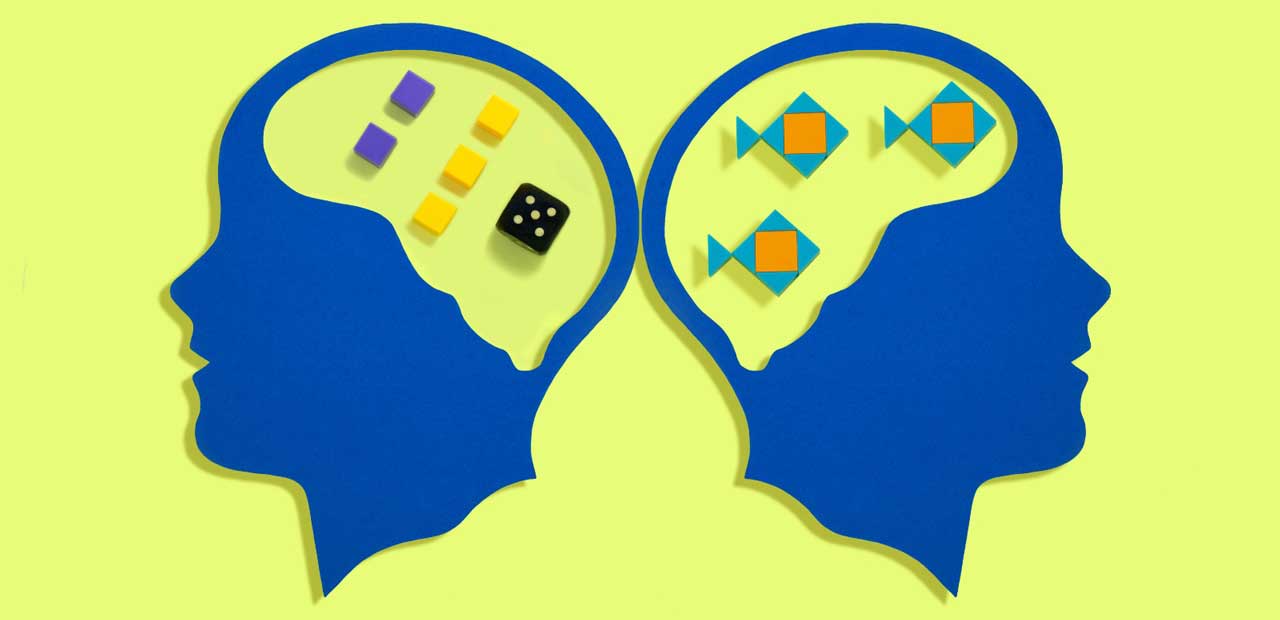AMYGDALA
It’s a significant hub for processing emotions. Additionally, it connects your emotions to a wide range of other cognitive functions, including memory, learning, and senses. It can either cause or contribute to disruptive feelings and symptoms when it isn’t functioning properly.
 Inside your brain is a little structure shaped like an almond called the amygdala. It is a component of the limbic system, a broader neural network in your brain. Both your limbic system and amygdala play critical roles in your survival. These are the areas of your brain that are predisposed to sense danger.
Inside your brain is a little structure shaped like an almond called the amygdala. It is a component of the limbic system, a broader neural network in your brain. Both your limbic system and amygdala play critical roles in your survival. These are the areas of your brain that are predisposed to sense danger.
The primary emotion that the amygdala is known to regulate is fear. Your amygdala is crucial to your survival because of this. It interprets information from what it sees or hears to determine what is harmful. Your amygdala will trigger similar feelings, such as terror, if you come across something similar in the future. But studies reveal that the amygdala is involved in more than simply fear and anxiety. It also contributes to the following:
-
- Conflict
- Acquiring knowledge via rewards and penalties
- Managing and employing implicit, or unconscious, memory, which enables you to recall certain skills without recalling the process of learning them (e.g., tying your shoes or riding a bike)
- Social communication and comprehension (including the ability to deduce someone’s intentions from their behavior or words)
- Emotions relating to parenting and providing care
- Learned habits connected to addiction
ROLE OF AMYGDALA
The amygdala plays a significant role in the psychological changes observed in adolescent brains, contributing to the development of various cognitive and emotional functions. Here are some of the psychological changes associated with the amygdala in adolescents and how they adapt:
1. Emotional Intensity and Reactivity:
-
- Adolescents often experience heightened emotional intensity, such as increased sensitivity to both positive and negative emotions
- The amygdala’s activity increases during emotional experiences, contributing to stronger emotional reactions
- These changes in emotional reactivity may help adolescents adapt to the complex emotional and social challenges they face during this developmental stage
2. Social Perception and Peer Relationships:
-
- The amygdala plays a central role in processing social and emotional cues, particularly those related to facial expressions and body language
- Adolescents become more attuned to social cues and develop a deeper understanding of peer interactions
- These adaptations help them navigate the complexities of forming and maintaining peer relationships during adolescence
3. Risk Assessment and Decision-Making:
-
- The amygdala is involved in assessing and responding to potential threats
- Adolescents often display increased risk-taking behavior, which is partially attributed to a heightened amygdala response to rewarding stimuli
- These adaptations are part of the maturation process and contribute to learning about the consequences of risky behaviors

4. Emotional Memory and Learning:
-
- The amygdala is critical for encoding emotional memories
- Adolescents may have a greater capacity to remember emotionally salient experiences
- This adaptation aids in learning from past emotional events and guides future decision-making
5. Regulation of Emotions:
-
- Adolescents develop emotional regulation skills, and the amygdala plays a role in emotion regulation
- As adolescents learn to regulate their emotional responses, the amygdala’s activity is gradually modulated by the prefrontal cortex
- These adaptations contribute to the ability to manage and control emotional responses in various situations
6. Fear and Anxiety:
-
- The amygdala is involved in the processing of fear and anxiety-related responses
- Adolescents may be more susceptible to anxiety due to the amygdala’s heightened sensitivity to perceived threats
- Over time, adolescents learn to manage and cope with anxiety, developing adaptive strategies for dealing with stress and fear
7. Emotional Resilience and Coping:
-
- The amygdala’s interactions with other brain regions, such as the prefrontal cortex, contribute to the development of emotional resilience
- Adolescents adapt to challenges by learning to cope with stressors and emotional difficulties
- These adaptations help build emotional resilience and enhance the ability to handle adversity
The changes in the amygdala and its interactions with other brain regions during adolescence are part of the brain’s overall adaptation to the increased social, emotional, and cognitive demands of this life stage. These adaptations are essential for adolescents as they learn to navigate and thrive in the complex world of adolescence, develop their identities, and prepare for the transition into adulthood.
Differences in the function of the amygdala in the brains of infants, adolescents, and adults
The amygdala undergoes important changes during infancy, adolescence and adulthood, but the nature of these changes differs due to the distinct developmental stages and needs of each period. There are significant differences between the changes in the amygdala during infancy, adolescence and adulthood.
Developmental Stage:
-
 Adolescence: This is a period of late brain development, typically occurring from around 10-12 years to the mid-20s, marked by the transition from childhood to adulthood. Adolescents are developing cognitive, emotional, and social skills, which require the amygdala to adapt to more complex social and emotional situations
Adolescence: This is a period of late brain development, typically occurring from around 10-12 years to the mid-20s, marked by the transition from childhood to adulthood. Adolescents are developing cognitive, emotional, and social skills, which require the amygdala to adapt to more complex social and emotional situations- Infancy: The infant stage covers the first few years of life, marked by rapid neural growth and the establishment of fundamental sensory and motor functions. At this stage, the amygdala’s functions are more basic and focused on basic emotional responses
- Adulthood: In adulthood, the brain is more fully developed, and individuals have already acquired a foundation of emotional and social skills during adolescence. The amygdala’s changes in adulthood are related to maintaining and refining these skills and adapting to life changes
Emotional Complexity:
-
- Adolescence: Adolescents experience a wide range of emotions, often with greater complexity and intensity, as they navigate complex social and emotional situations, form peer relationships, and develop a sense of identity. The amygdala adapts to process and regulate these complex emotions
- Infancy: Infants primarily experience basic emotions such as joy, distress, and fear, and their amygdala is more involved in basic emotional reactions, particularly related to attachment and the caregiver-infant relationship
- Adulthood: In adulthood, emotional reactivity tends to stabilize and become more balanced. The amygdala’s responsiveness to emotional stimuli becomes more regulated, leading to greater emotional control
Social Awareness and Cognitive development:
-
 Adolescence: The amygdala in adolescence is heavily involved in the processing of social cues, understanding social hierarchies, and forming and maintaining peer relationships. It becomes more attuned to social interactions and complex emotional dynamics. Cognitive abilities, such as impulse control, decision-making, and problem-solving, are rapidly developing during adolescence. The amygdala’s interactions with the prefrontal cortex are essential for these processes
Adolescence: The amygdala in adolescence is heavily involved in the processing of social cues, understanding social hierarchies, and forming and maintaining peer relationships. It becomes more attuned to social interactions and complex emotional dynamics. Cognitive abilities, such as impulse control, decision-making, and problem-solving, are rapidly developing during adolescence. The amygdala’s interactions with the prefrontal cortex are essential for these processes- Infancy: In contrast, infants are primarily focused on forming an attachment to their primary caregivers. Their amygdala is involved in emotional bonding and recognizing caregivers’ emotional expressions. Infants are just beginning to develop cognitive functions, with the amygdala’s role being more basic, focused on processing emotional and sensory information
- Adulthood: The amygdala continues to play a role in social interactions and emotional processing, but it is more involved in maintaining and refining existing social and cognitive skills, as well as adapting to changes in life circumstances
Emotional Resilience:
-
- Adolescence: Adolescents are in the process of building emotional resilience as they learn to cope with stressors and emotional challenges. The amygdala is adapting to facilitate this growth
- Infancy: Responsive, nurturing, and consistent caregiving helps infants build a strong emotional foundation, which in turn supports their ability to cope with stress and adversity. While the amygdala plays a crucial role in this process, the overall environment and caregiving are equally important for fostering emotional resilience in infants
- Adulthood: Adults have typically developed a higher level of emotional resilience and coping mechanisms. The amygdala is involved in maintaining this emotional resilience as individuals navigate the challenges of adult life
Ms. Samiya Thahani
Assistant Psychologist @Islaah
